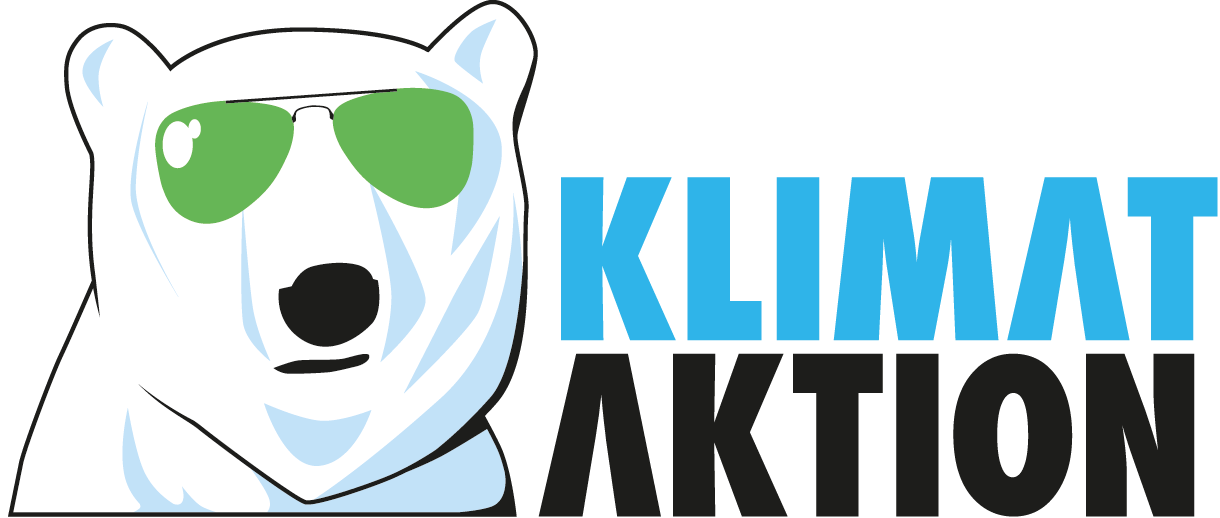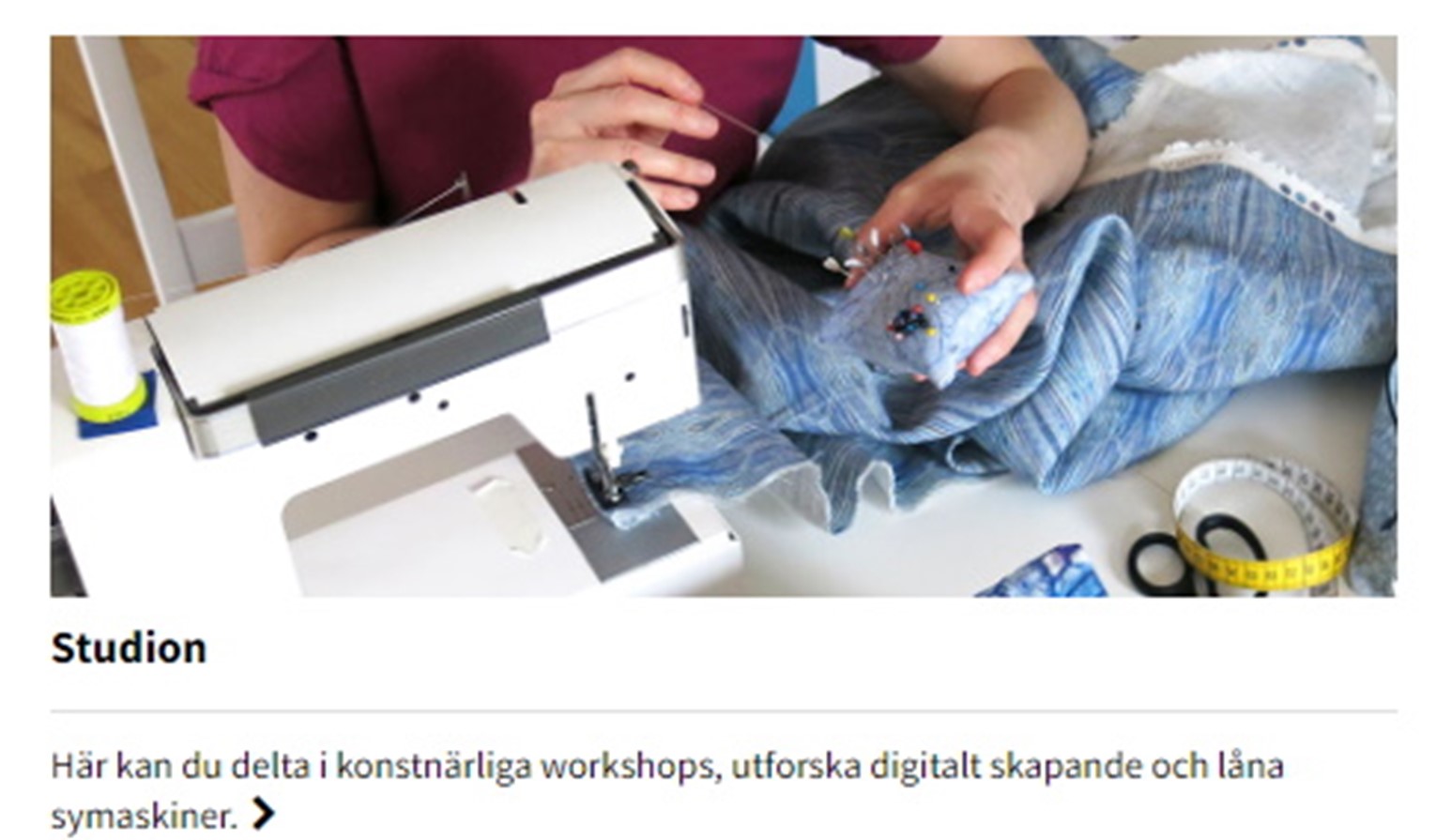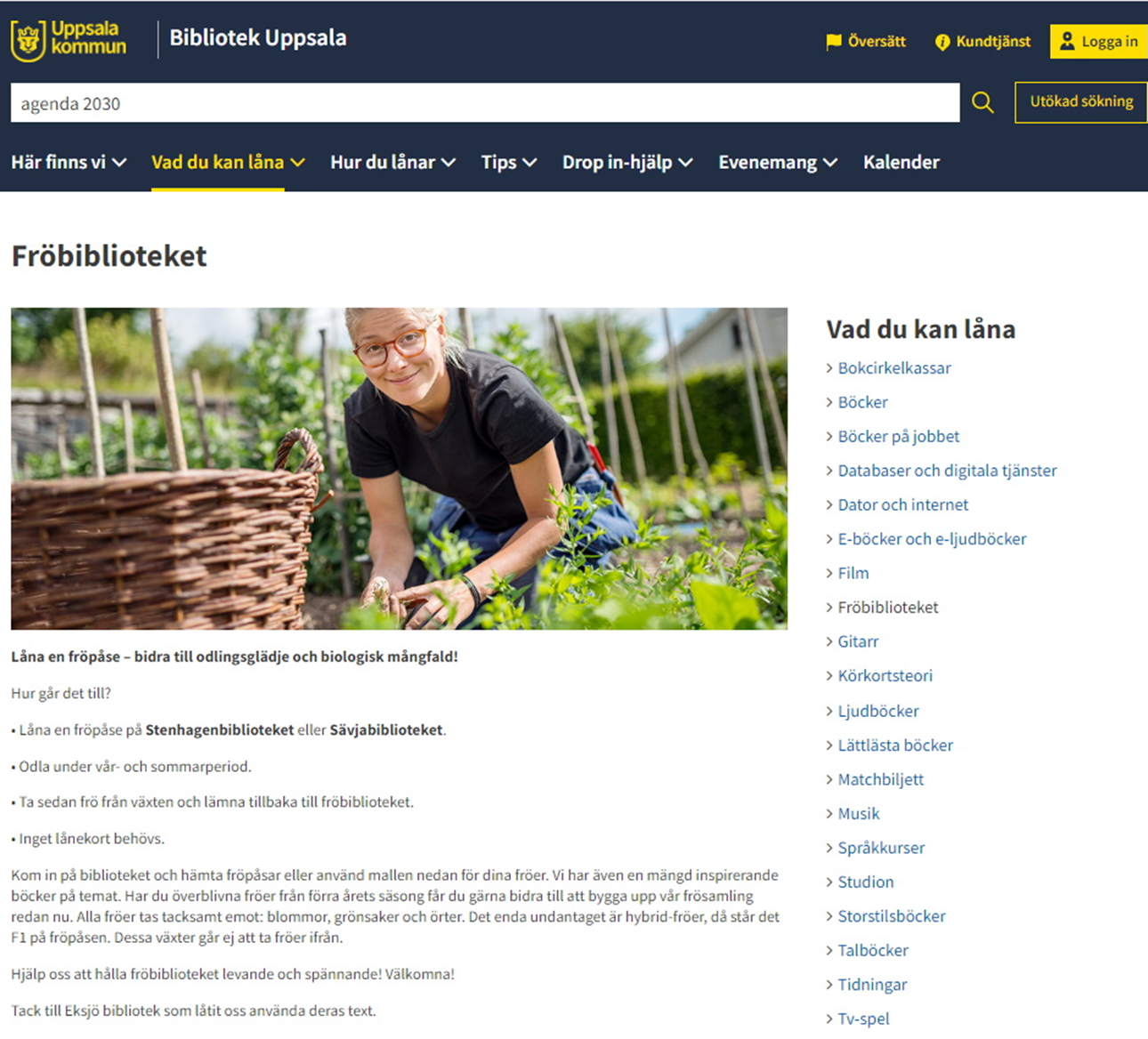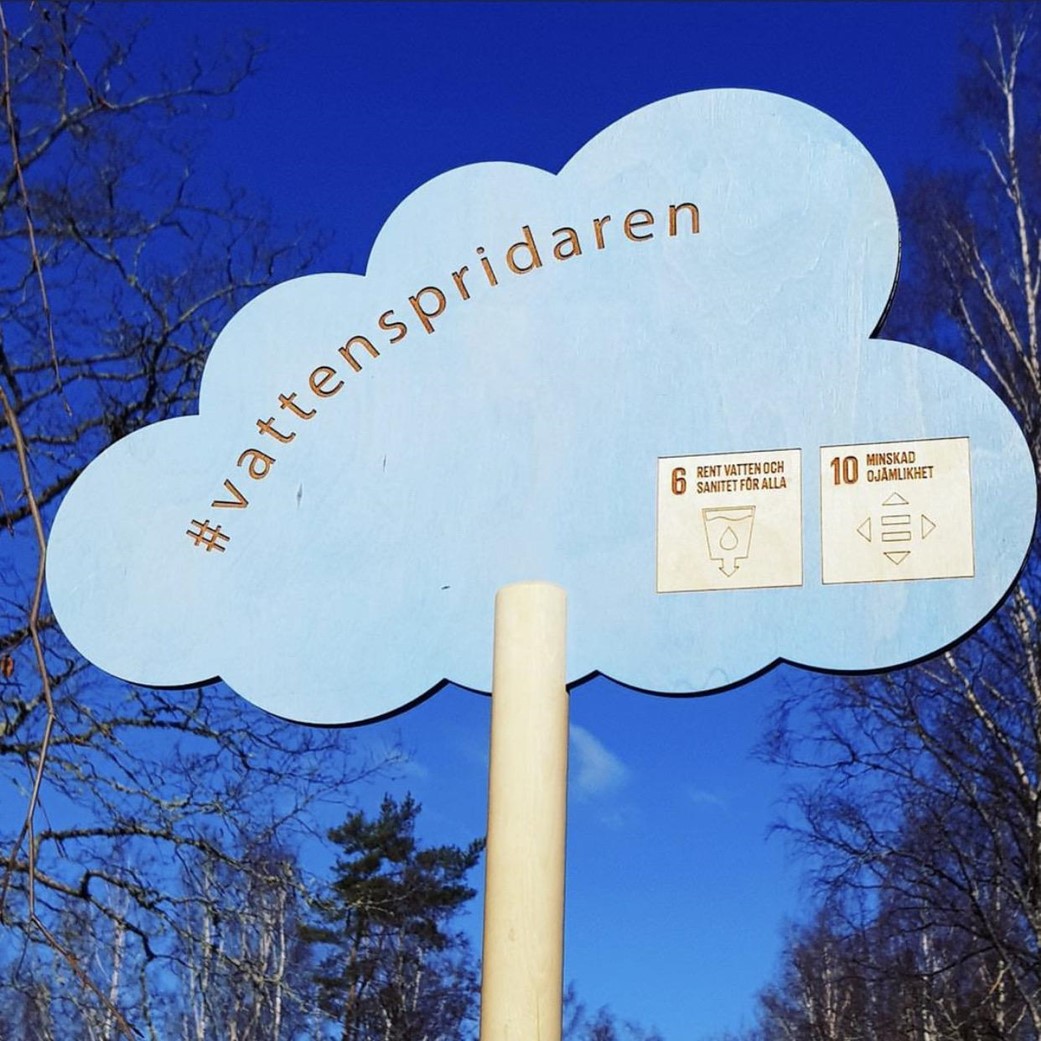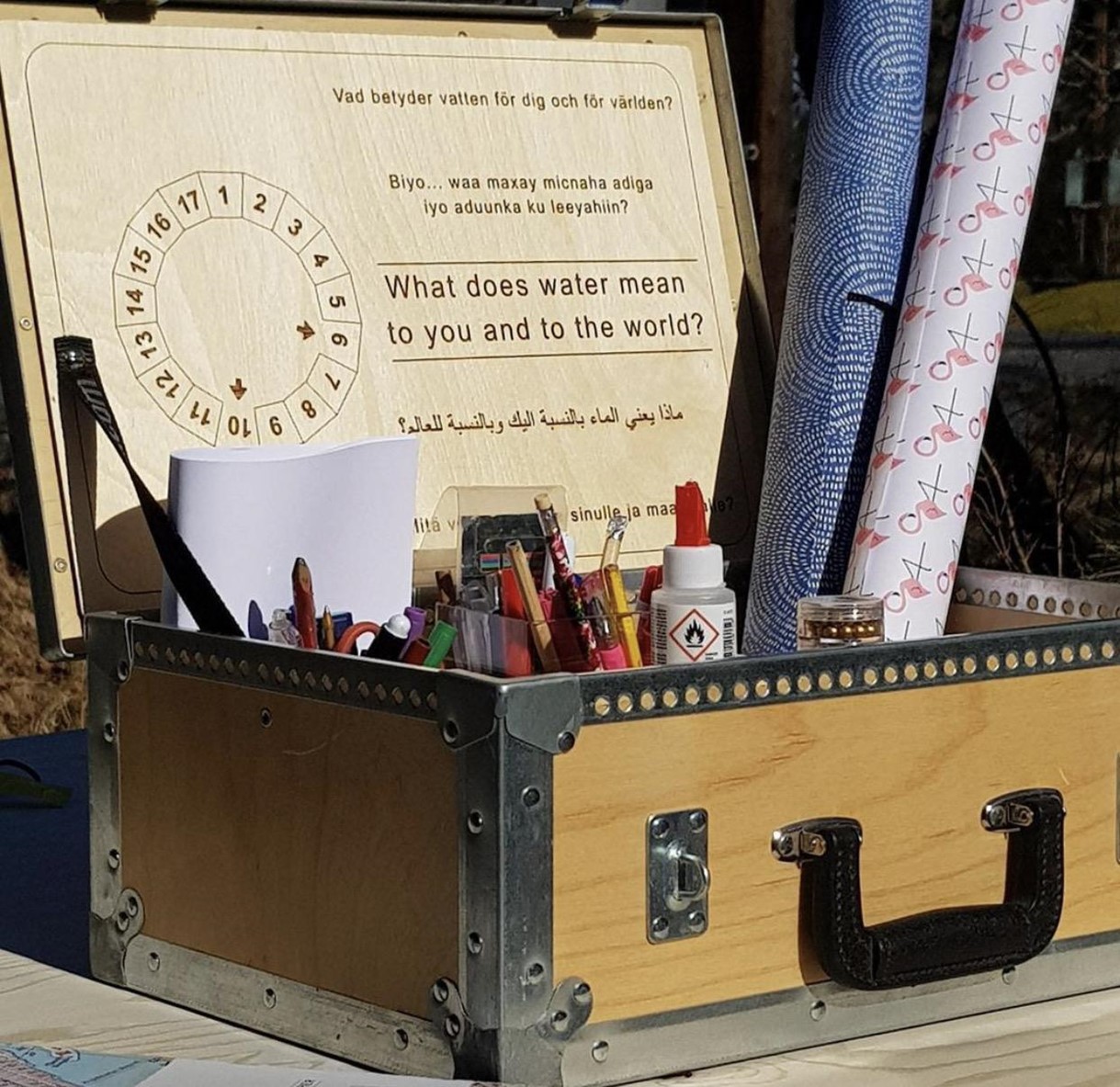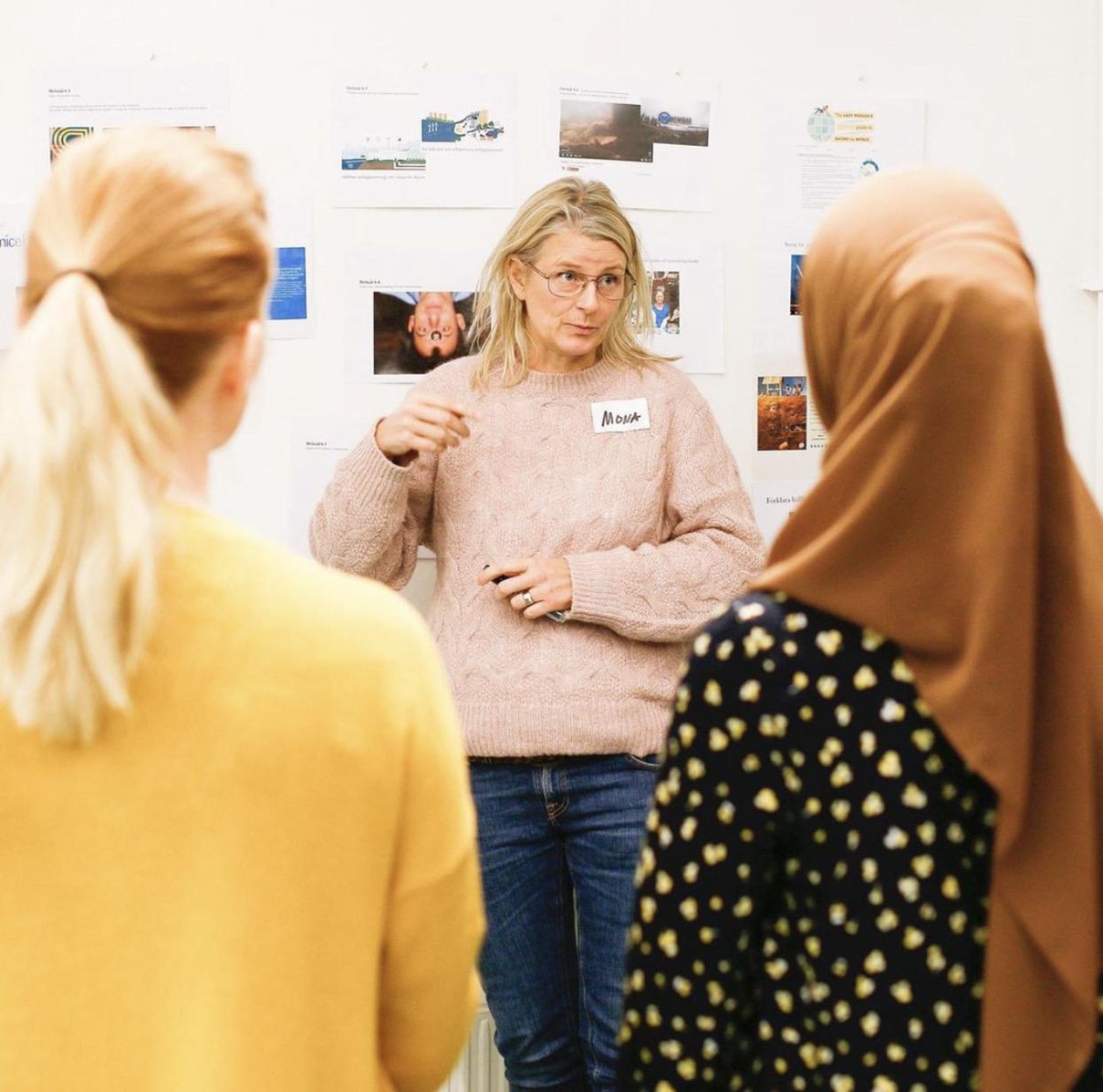Sharing and caring
The very basis of public libraries is recycling, the sharing of collections. Since a couple of years back, the sharing has expanded to include seeds, sewing machines, 3D printers, tools and other items that easily can be shared or circulated and used by many users. Mending and repairs have also been introduced to the public libraries where techniques and skills are shared.
If we move beyond collections and the physical objects what role do the public libraries have in achieving Agenda 2030 and the SDGs?
“Living” the Agenda
I will give some glimpses of what the local public library could do to take some steps to become an active part of “living” Agenda 2030.
“To achieve the 2030 Agenda, the world as we know it should transform dramatically and on a large scale. We should change the exploitation of resources, production and distribution chains, consumption, mobility, commercial laws… And this will only happen if, at the same time, three specific issues intrinsic to culture change: identity, values and narratives.”
Jyoti Hosagrahar, Director of the Division of Creativity at UNESCO
I will start to talk about what culture and especially libraries can contribute in the collective efforts to fight a threatening future. The arts and performances explore and manifest the “story of” their time. Libraries can aid users to find identity, values, and narratives.
During Cop26 in Glasgow I happened to come across a webinar “Communities Tapping Their Shared Cultures and Heritage for Climate Action”. This roughly one hour long contribution points out the role of culture, including the libraries, as an untapped source in the context of the stories about climate and sustainability.
“Culture is who we are, and what shapes our identity. Placing culture at the heart of development policies is the only way to ensure a human-centred, inclusive and equitable development. [..] If the SDGs are grouped around the economic, social, and environmental objectives as the three pillars of sustainable development, then culture and creativity contribute to each of these pillars transversally. The economic, social, and environmental dimensions of sustainable development, in turn, contribute to the safeguarding of cultural heritage and nurturing creativity.
Jyoti Hosagrahar (Director of the Division of Creativity at UNESCO) Culture: at the heart of SDGs
“Social transformation is ultimately an emotional process. People at a given moment react, become motivated and are empowered, thereby changing their lifestyle. As the world gets smaller and more complex, we need that art, that culture and those educational systems that make us think and feel, that provide us with a profound emotional knowledge of reality, inspiring and helping us to understand who we are as a species and how we have reached this situation.”
Lucía Vázquez: Transforming Our World: Achieving the 2030 Agenda through Culture and Education
Bringing stories to live
We, as libraries, have always provided stories about our society. Through stories, we communicate with the past, present and future. Stories as a way to communicate can change beliefs, and life goals connect people with one another through time. Libraries and stories can provide comfort, hope and alternative ways of thinking about our own lives, our society.
The library provides a social arena for its inhabitants. The library can connect the story of climate change to the local context, and the needs of an equal society and a sustainable future, by that give an opportunity to build values.
By giving books a framing, providing programs with speakers talking about SDGs, Agenda 2030 and climate action, the local library can bring the topic to attention. With a series of programs and activities, a narrative can be built. We bring the books to life and expose the users to collections of stories about a sustainable future.
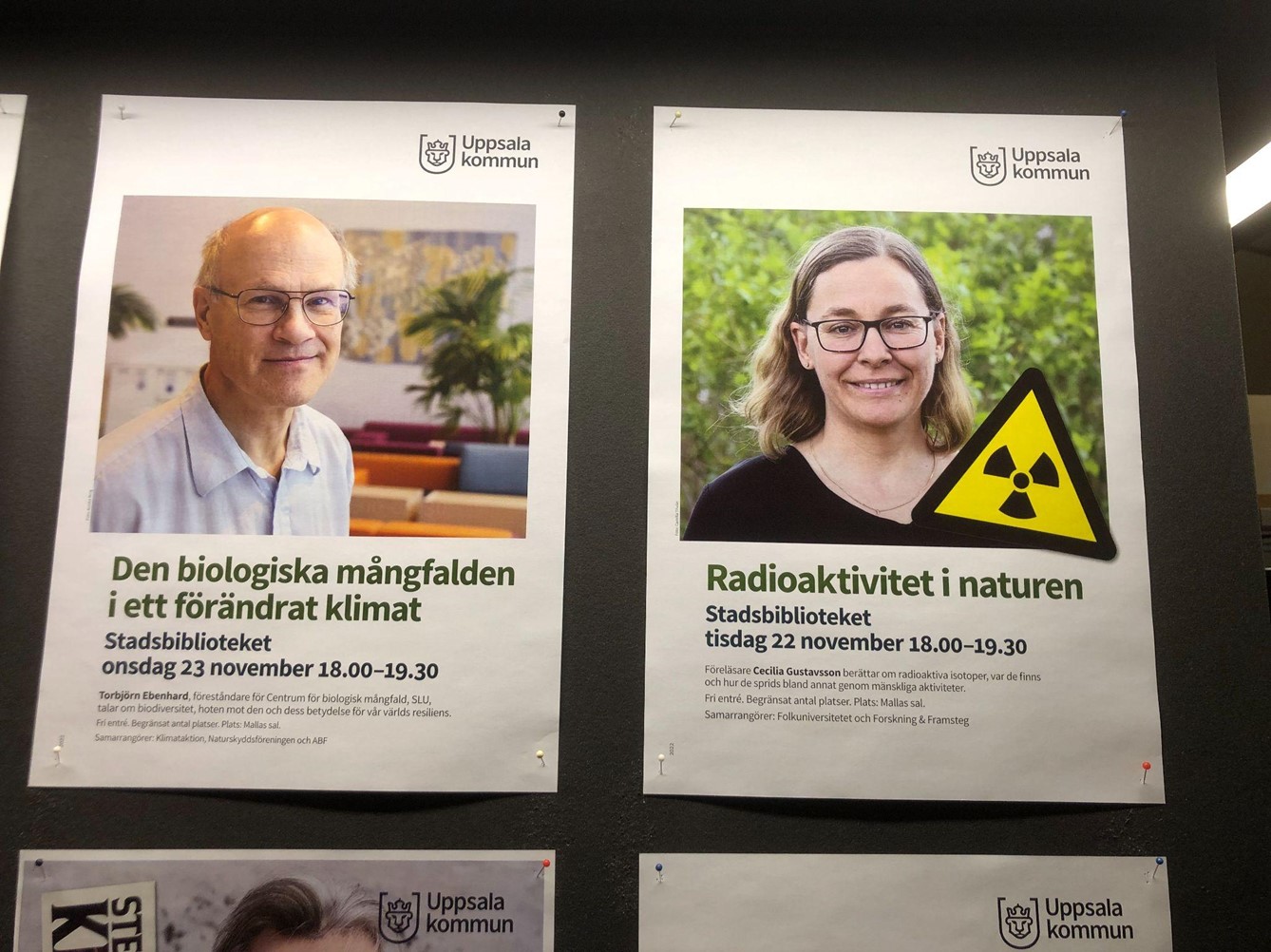
A more active way would be to facilitate the users to make their own conclusions based on activities the libraries can provide. Using our space and content in creative and exploratory ways, in processes that form identity.
Examples from Sweden
I will describe a few interesting cases from Sweden.
The amount of information about climate change, equity and social engineering, and analysis of the collected global data about the environment, sustainability and economic impacts is overwhelming and sometimes contradictory.
Fake news, alternative facts and disinformation are equally growing. The tools for assessing information and the sources of information need to be more widely taught. The public library has the means to facilitate this.
The National Library of Sweden (KB) analyses the content of the library plans from municipalities and regions. We noticed that many library plans included Agenda 2030, but did not set any goals. We interpreted this as the public libraries having had good intentions but lacking examples of activities and goals.
KB had the opportunity to commission Biblioteksutveckling Sörmland (Library development Sörmland) for an exploratory assignment. KB gave a grant of approx 9 200 € to Sörmland to explore the libraries’ learning around Agenda 2030 and the global goals with a particular focus on the relationship to MIL, media and information literacy.
The result became “The sustainable library” (Hållbara bibblan), a concept that acts as an overarching umbrella for different activities. Four themes were used:
- Designing for Internet Participation
- Communication for a sustainable world
- Open data in a sustainable city
- Libraries in a circular economy
Library development Sörmland started to explore in a broad sense the connections between public libraries and Agenda 2030, for instance collecting information from Library Map of the World (IFLA). They created an inspiring article on the digital competence platform Digiteket describing how Swedish libraries can interact with the Library Map of the World, enhancing the Story telling manual created by IFLA as a tool to use to tell the story of the local library’s efforts.
Some other activities resulted in a pod “hållbarabibblan” and also an article at Digiteket about how SDGs can demonstratehow to use Facebook as a channel for recommending fiction telling the story about climate action, using for instance cli-fi (literature that deals with climate change and global warming). Yet another Digitetket resource that was created is “Queering Wikipedia” – making the internet a bit more equal.
One of the bigger activities was MIK-jam, an MIL (Media and information literacy) event using a design process for developing new library activities. MIK-jam Sweden is a concept developed by Martin Törnros, and described in a book, a guide into the methods used.
In the event of #Hållbarabibblan and Agenda 2030 the organizers used the above mentioned themes, and invited library staff to sign up for a two-day digital workshop, choosing one of the four themes above to explore. The 24 participants worked in groups with the selected theme and with short interventions by an inspirational person.
Day 1 started with a general introduction to the Double Diamond design process based on four steps. During the two days all four steps were carried out, with a gap of one week between day 1 and day 2, to give the groups time to develop the ideas before day 2 started with developing a prototype, testing and feedback. Some of the prototypes were 17 bookcases designed in waste materials, a climate club for young people, Wikipedia in the local community and a YouTube club. The participants worked in padlets to share their work.
The entire #hållbarabibblan work delivered on commission from the National Library of Sweden is described in a project report.
Library development Sörmland had previously done a project called #vattenspridaren (The water dispenser). The project worked with creative and collaborative processes in libraries, for a sustainable future based on equality and water. It was a process, the outcomes were creative ways to address Agenda 2030 and learning. SDGs 6 and 10, “Clean water and sanitation” and “Reduce inequality within and among countries” were the core. By picking clean water and equality as starting points, it challenged both the library developers and the users.
Victoria Lagerqvist explains:
We invited the users to a »Water Lab« and developed a method that involved those who participated doing together and learning together. We invited people from different backgrounds so that different perspectives met for discussion. They talked about what the role of libraries should be regarding sustainable development. The conversation about development was thus the #Vattenspridaren itself.
To facilitate the workshops a multilingual storytelling and creation box was created. The box contains, among other things, a deck of cards, a toolbox, an Agenda 2030-wheel, and questions about water and the world. The physical objects were a point of departure for discussions and creative exploring, the result was the thinking process of asking questions and looking for answers, the engagement.
#vattenspridaren brings the local library one-step up in level of activity. The library acts as a catalyst for the users to explore and use their own resources to connect to SDGs and make their own conclusions about actions and consider a change of lifestyle. For me, this is a way of the library “living” Agenda 2030, introducing users to a topic, offering the space and some physical objects to gather around to facilitate conversation and from there building an understanding and possibly a narrative of what needs to change. This is a way of framing Agenda 2030.
Building trust in science and research
Distrust for science, scientific results and the research process is a growing problem. It became evident during the Covid-19 pandemic that parts of our society have a high disbelief in research. Conspiracy and alternative facts hit the newspapers’ front pages. Data and research become a matter of opinion rather than a trusted part of a scientific process. When it comes to climate change, SDGs, and the goals for Agenda 2030, these are also disputed and opinions rather than science dominate in some forums.
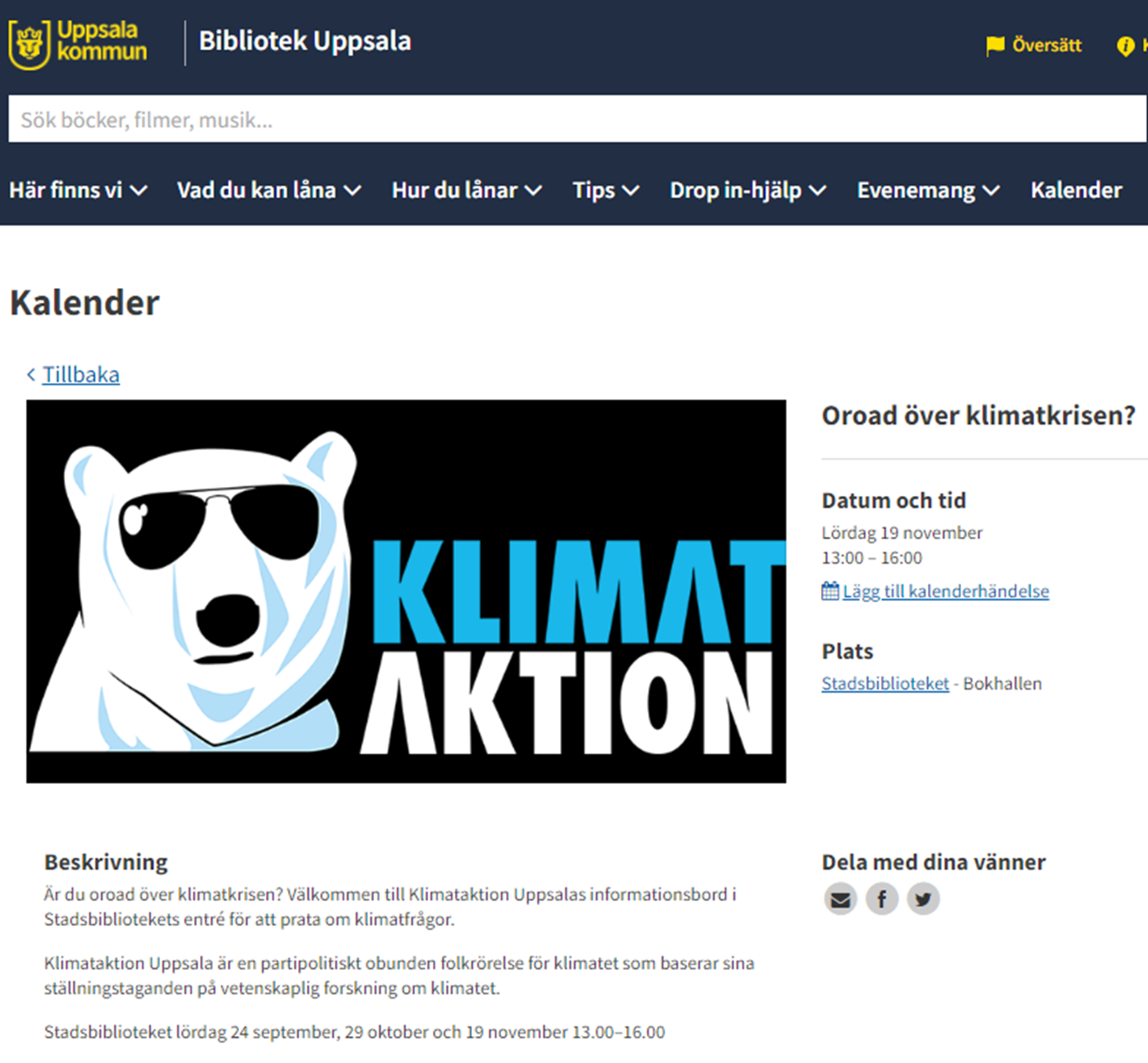
For a long time, public libraries have had a high focus on providing more tools and knowledge about information evaluation. However, this will only work if people are willing to learn and change their minds.
Another way of building trust in science is to make the research process more transparent and more open. By making it possible for citizens to become a part of research and data collection, a higher degree of involvement and understanding will be possible. A common label for this effort is citizen science:
Citizen science is an ‘umbrella’ term that describes a variety of ways in which the public participates in science. The main characteristics are that: (1) citizens are actively involved in research, in partnership or collaboration with scientists or professionals; and (2) there is a genuine outcome, such as new scientific knowledge, conservation action or policy change. Our members developed ‘10 principles of citizen science’, which are available in a number of languages. More recently, the citizen science community, including ECSA members, developed the ‘Characteristics of citizen science’.
Citizen science takes place in diverse fields, including ecology, astronomy, medicine, computer science, history – and many more. And citizen science can happen at a range of different scales – from local projects to continental and global scales, and from short projects to those that occur over decades! European Citizen Science Association (ECSA)
Open Science is an even bigger umbrella term, including citizen science, open access and bringing transparency to ways of conducting research and producing science. During 2021, UNESCO adopted a Recommendation on Open Science
Open Science has the potential of making the scientific process more transparent, inclusive and democratic. It is increasingly recognized as a critical accelerator for the achievement of the United Nations Sustainable Development Goals and a true game changer in bridging the science, technology and innovation gaps and fulfilling the human right to science.
About Open Science
UNESCO describes Open Science as consisting of four pillars:
Open scientific knowledge,
Open science infrastructures,
Open engagement of societal actors and
Open dialogue with other knowledge systems.
I can’t give an in-depth insight into the UNESCO recommendation in this blog post. There is a huge potential for the public libraries to act as mediators between science/research and citizens. Public libraries have the possibility ofbecoming an interface in this process. The public libraries’ staff have ICT skills and competence in MIL and a long tradition of facilitating information and knowledge. These are components that are crucial for bringing citizens with special skills and/or big interest into the world of citizen science and open science.
I would like to share one example of citizen science even though it is not connected to the Agenda.
Skills in Shorthand is key to being able to transliterate the famous children’s author Astrid Lindgren’s notebooks. Astrid Lindgren Archives is a UNESCO World Heritage Collection and part of the collections of the National Library of Sweden.
This Expert Crowdsourcing project is an illustrative example of the interplay between mainly older ladies who still have skills in shorthand and the researchers. The volunteers have completed a tremendous collective effort of transliterating Lindgren’s shorthand notepads. For those who attended WLIC 2022 in Dublin, you might have seen the poster. A longer description of the Astrid Lindgren project authored by Karolina Andersdotter and Malin Nauwerck points out some interesting experiences of an expert crowdsourcing effort.
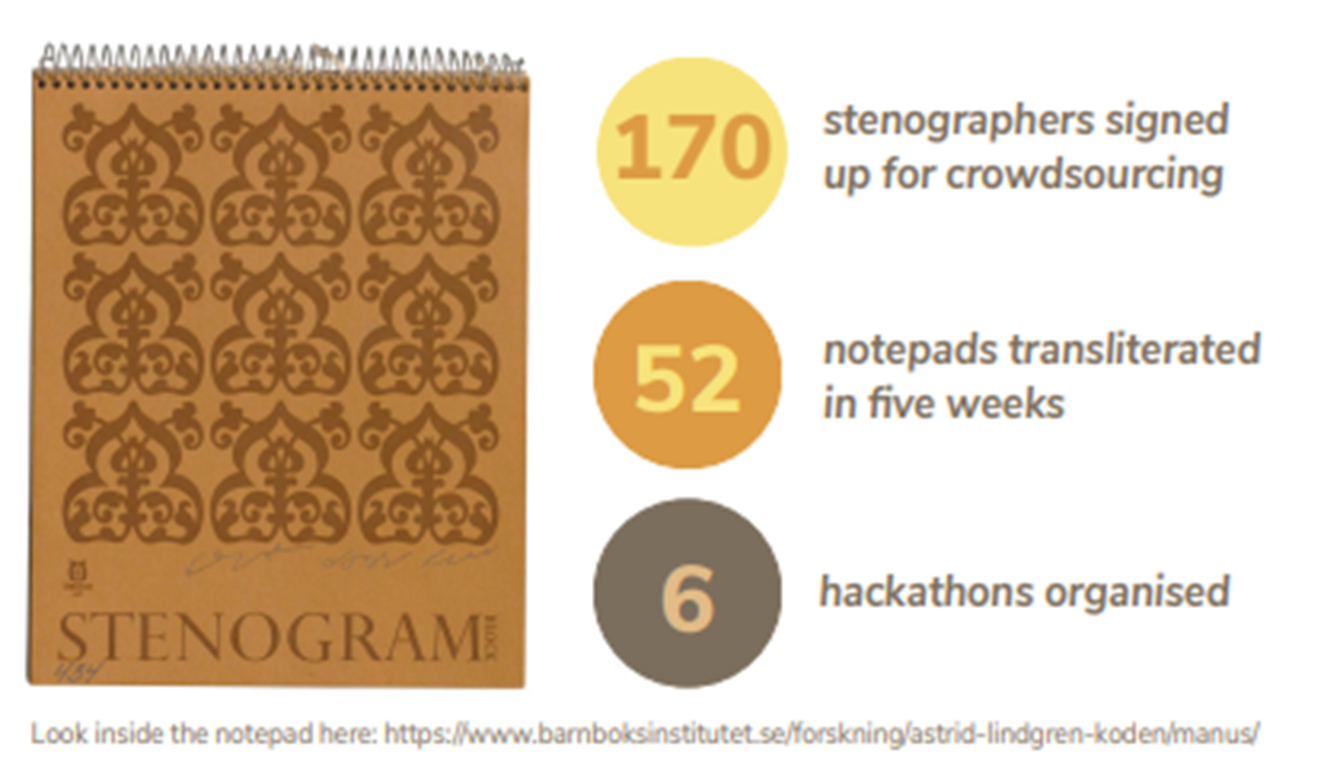
Karolina Andersdotter points out some benefits of the process:
- It makes citizens involved and engaged; some people are really devoted or passionate about specific topics or skills and have a deep knowledge about that particular subject.
- Gives a social value, being part of a group. It could even be a way of breaking loneliness. (Andersdotter’s paper describes how the pandemic influenced their work).
- Gives participation on equal terms, the discussions and collective problem solving adds a feeling of being important and adding value in the process.
- Researchers have an opportunity to reevaluate their practice and to get insights of what is important for the crowdsourcing group.
- Gives non-researchers important insights into scientific methods so that they learn to understand how to scrutinize science.
Open Science and Citizen Science could be another step in “living” Agenda 2030. Making the patrons an active part in creating and disseminating research about sustainability and climate.
Read more about how libraries can activate Citizen Science!
Elisabet Rundqvist, Chair of NAPLE WG Library services for, with and by persons identifying as bearer of a Regional or Minority Language
Executive officer National Coordination of Libraries and special adviser for library services for national minorities, National Library of Sweden.

